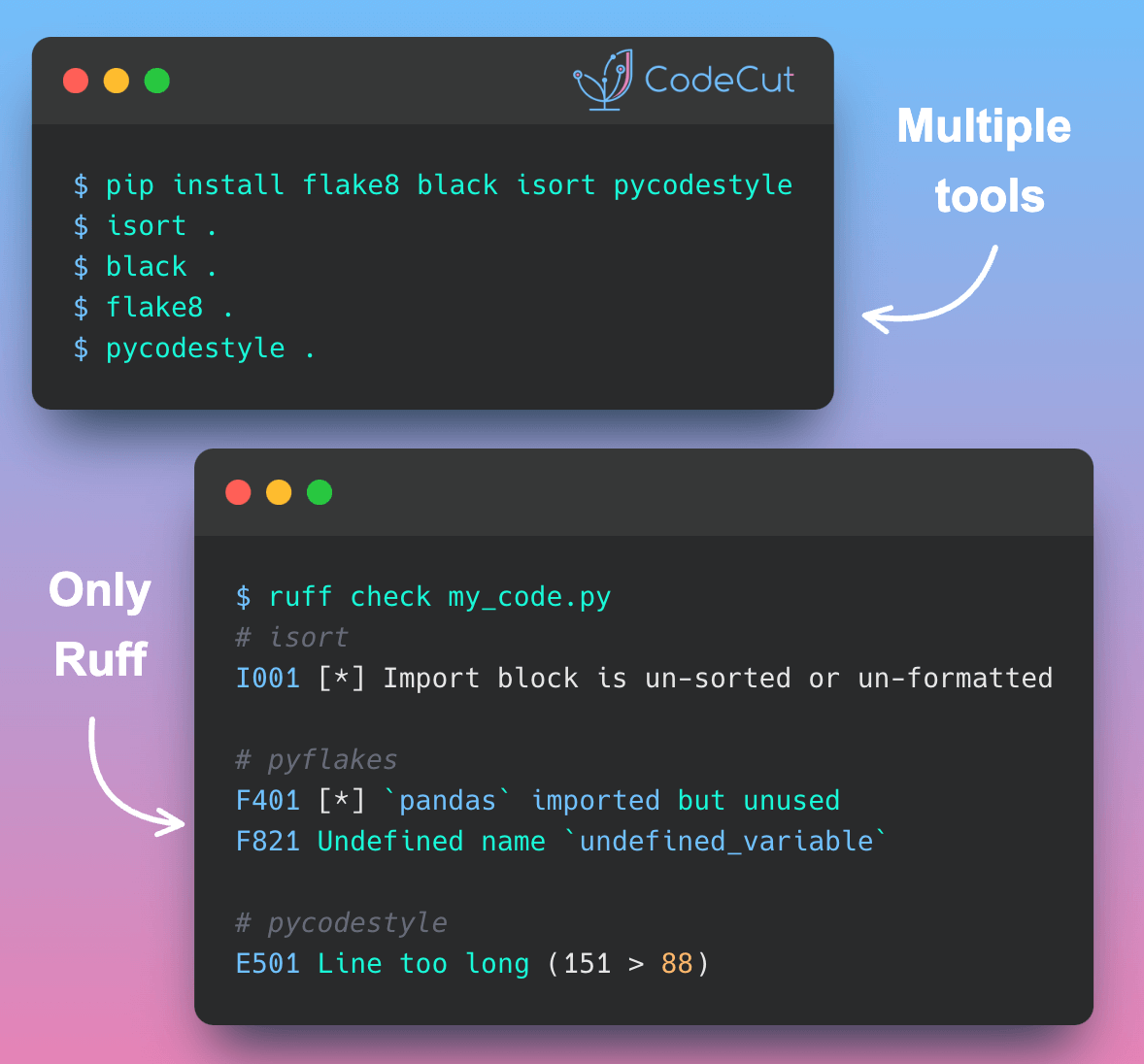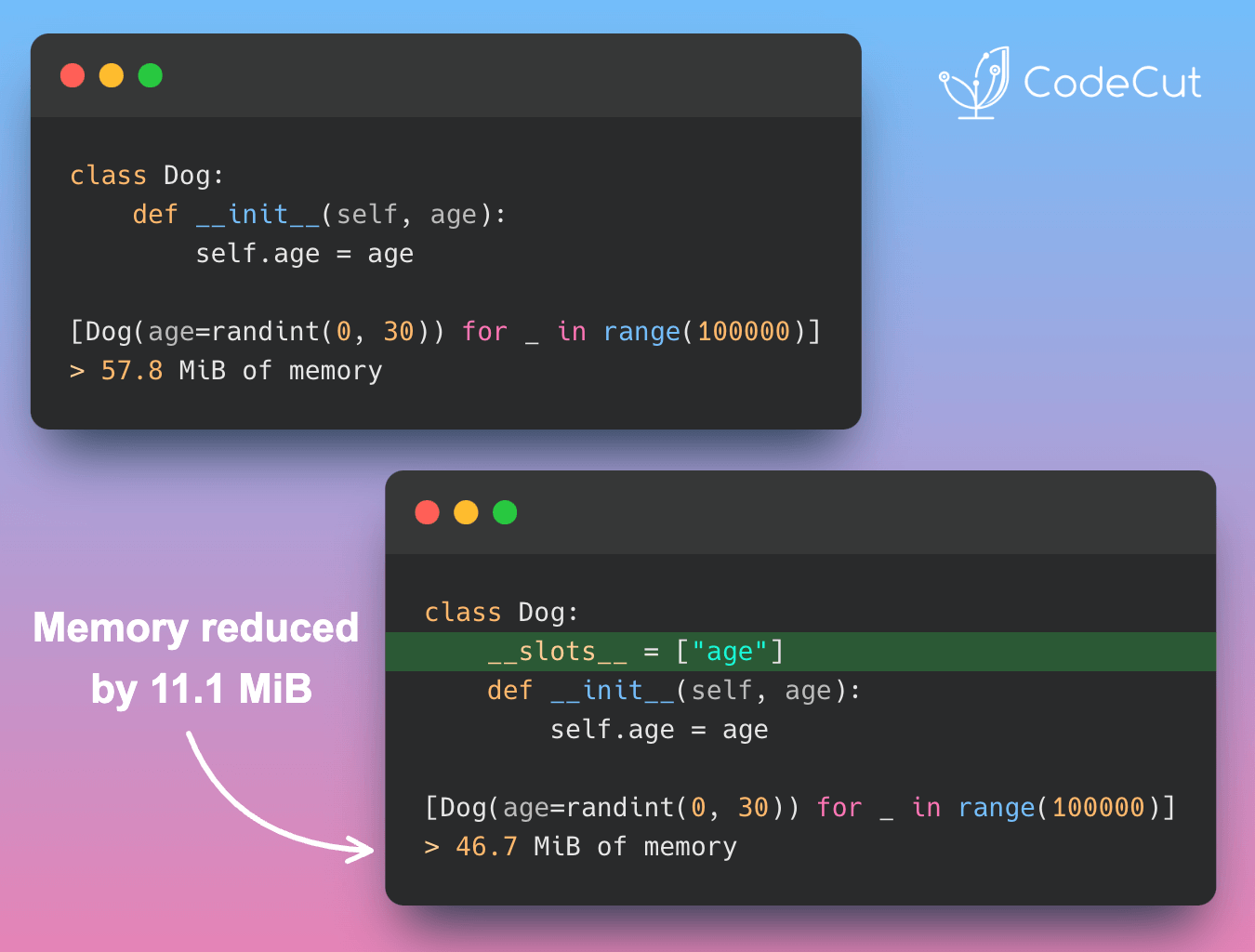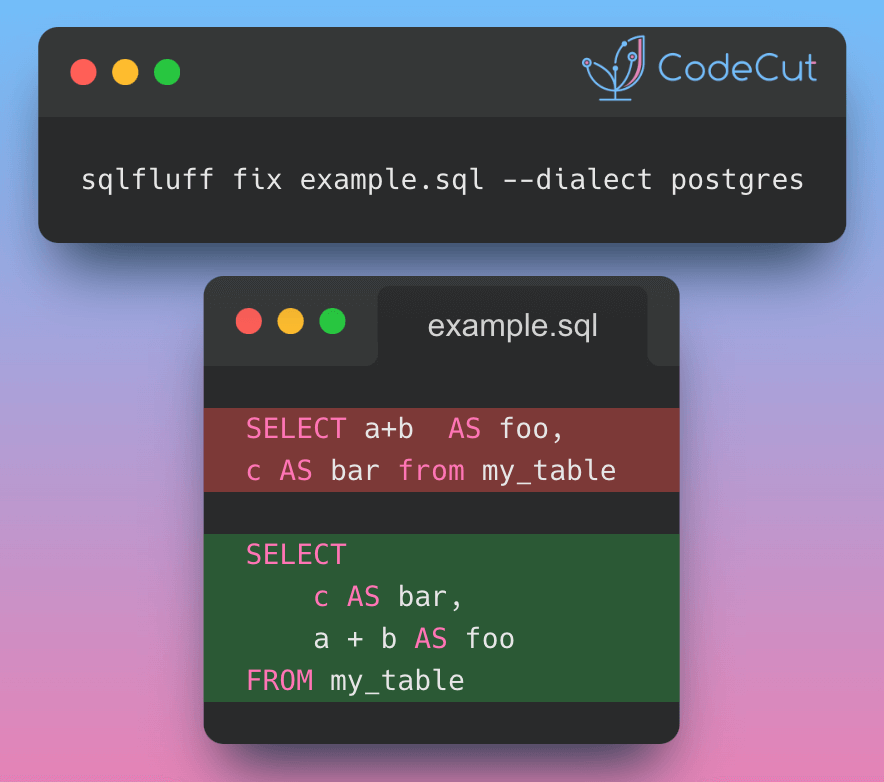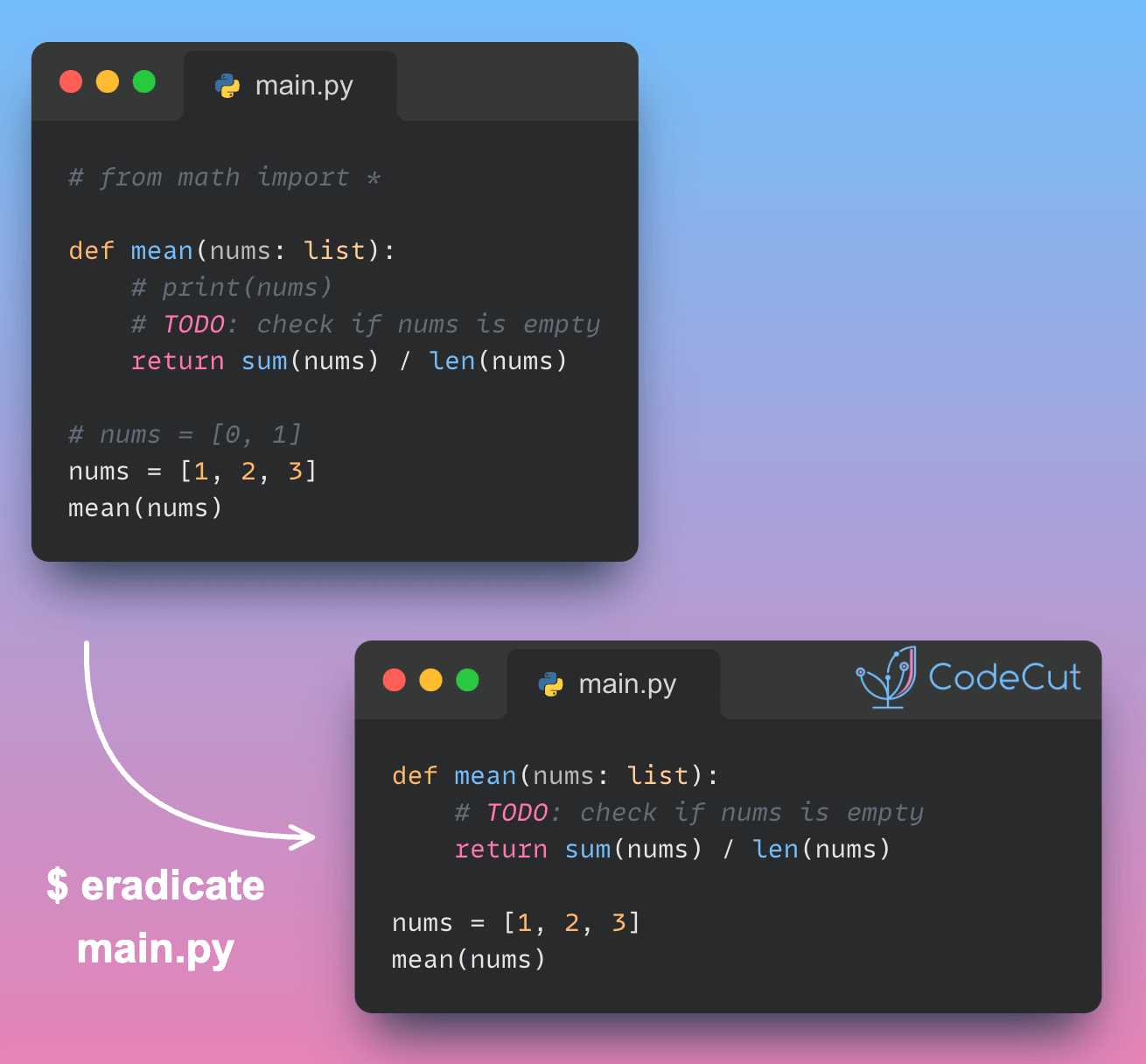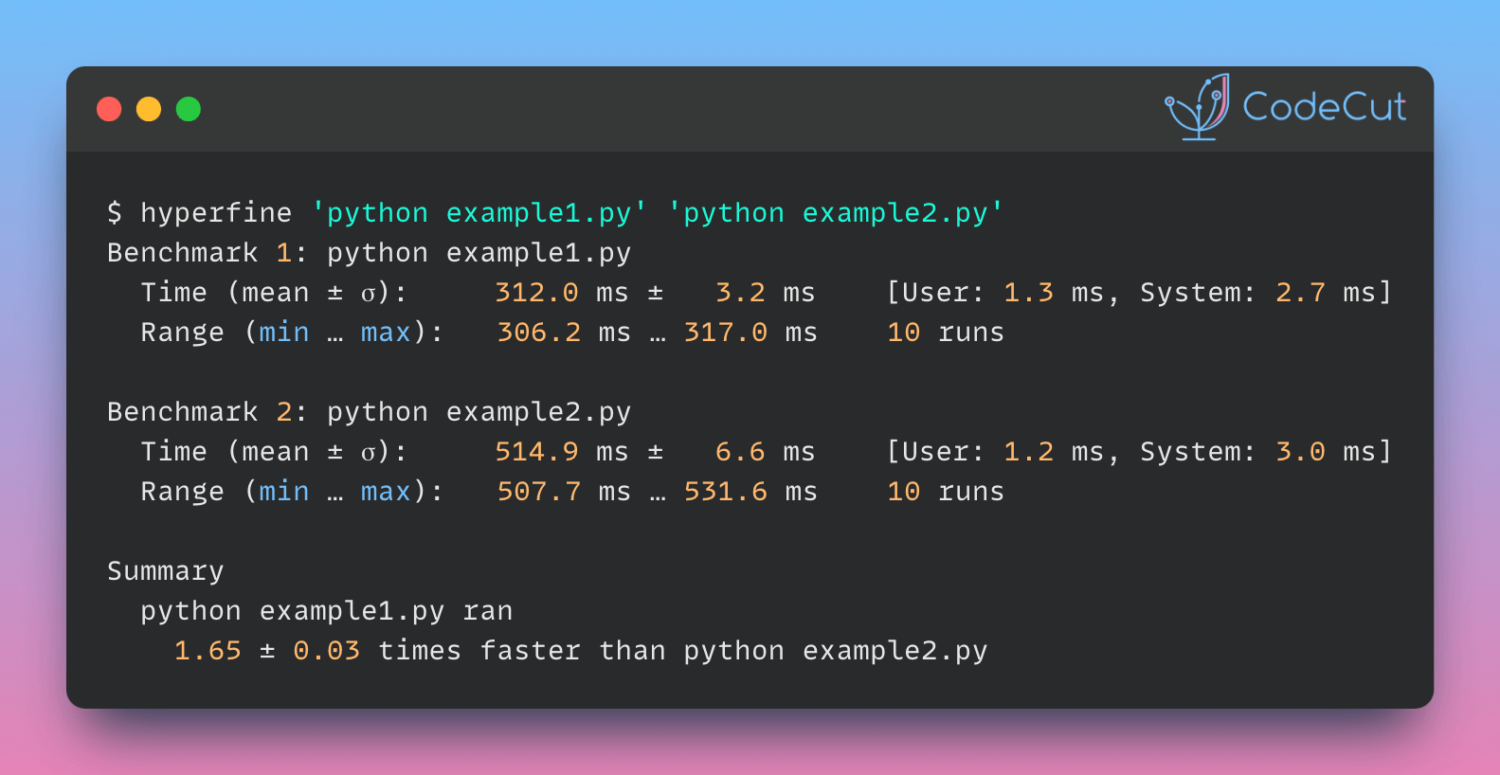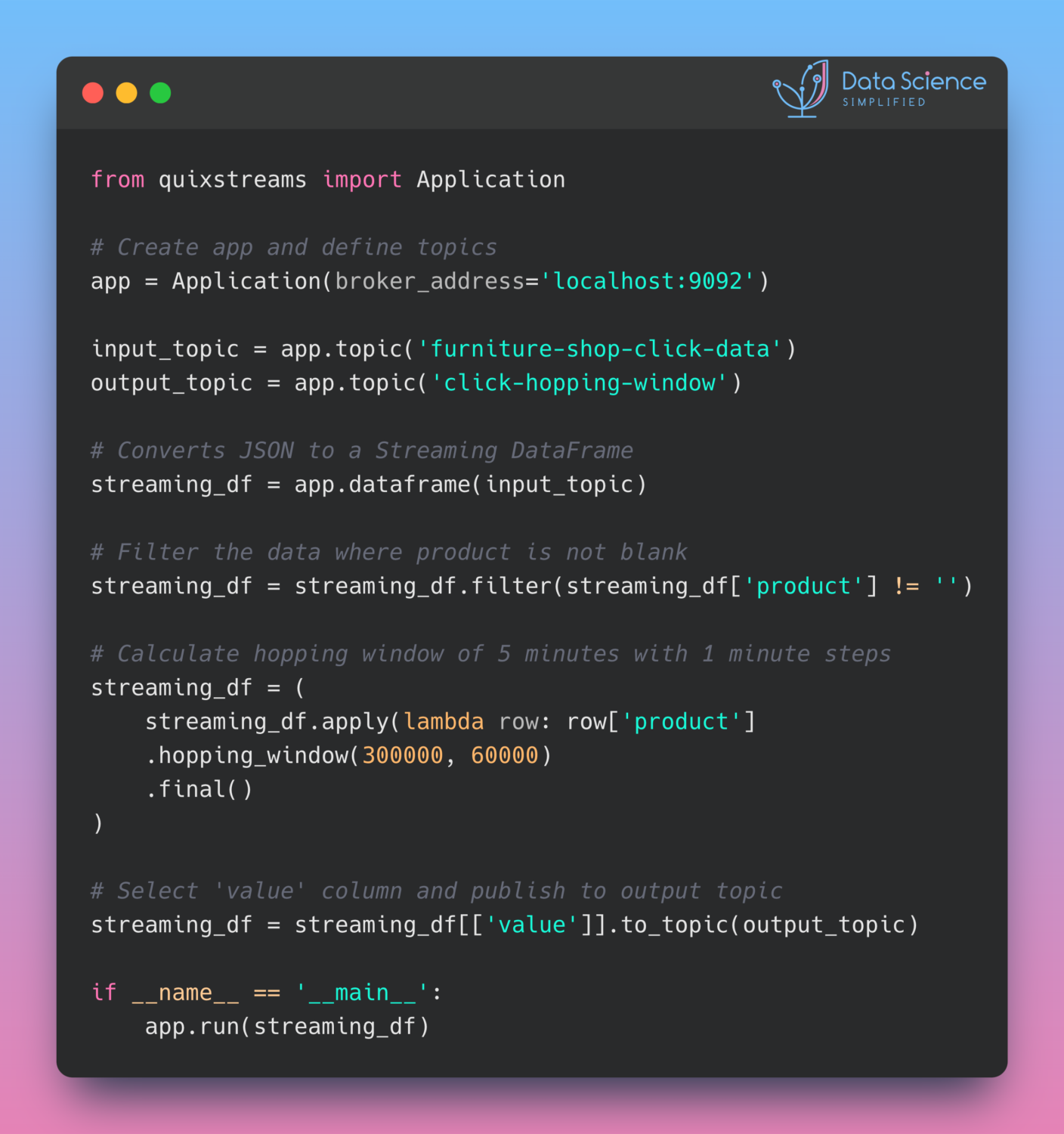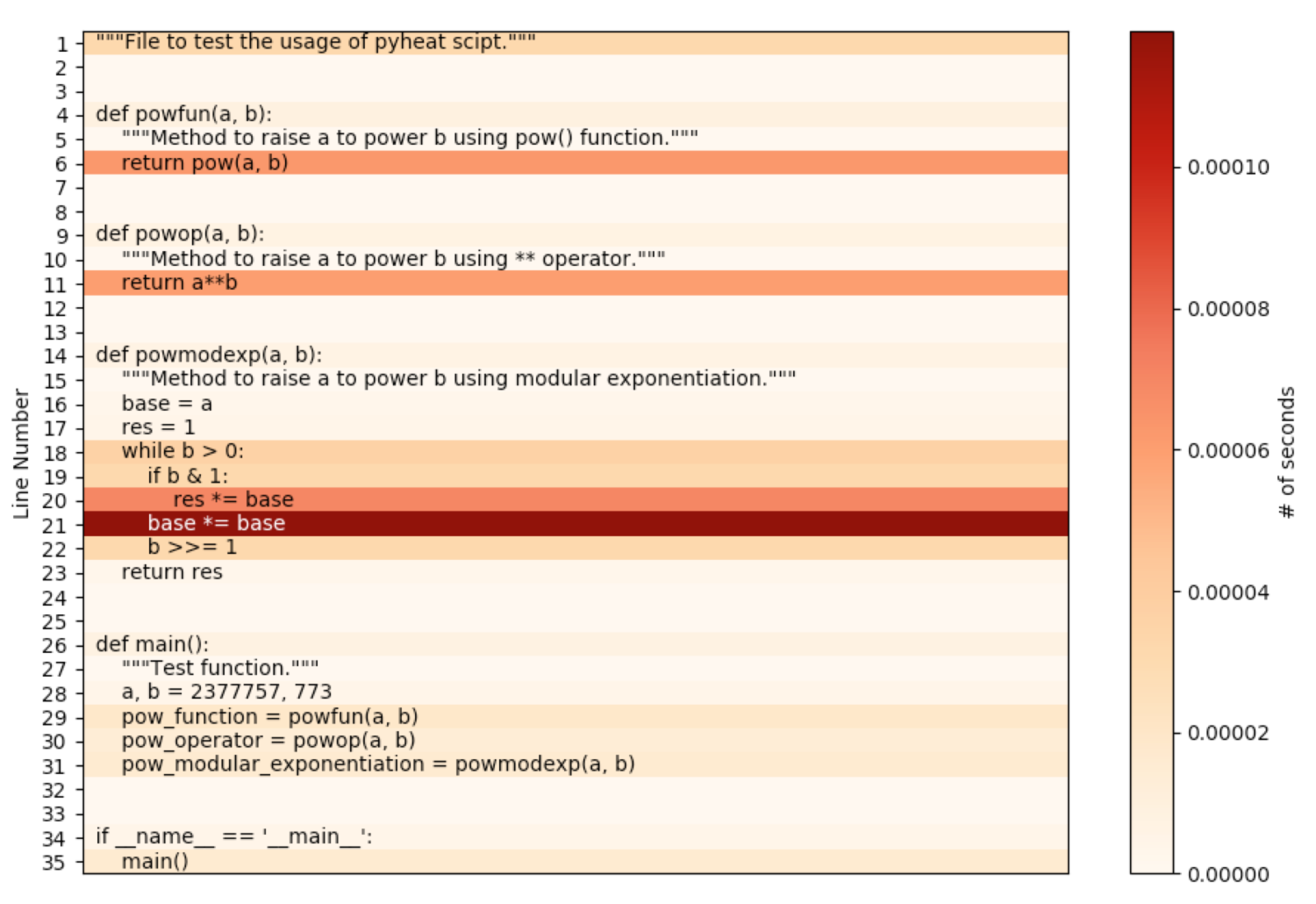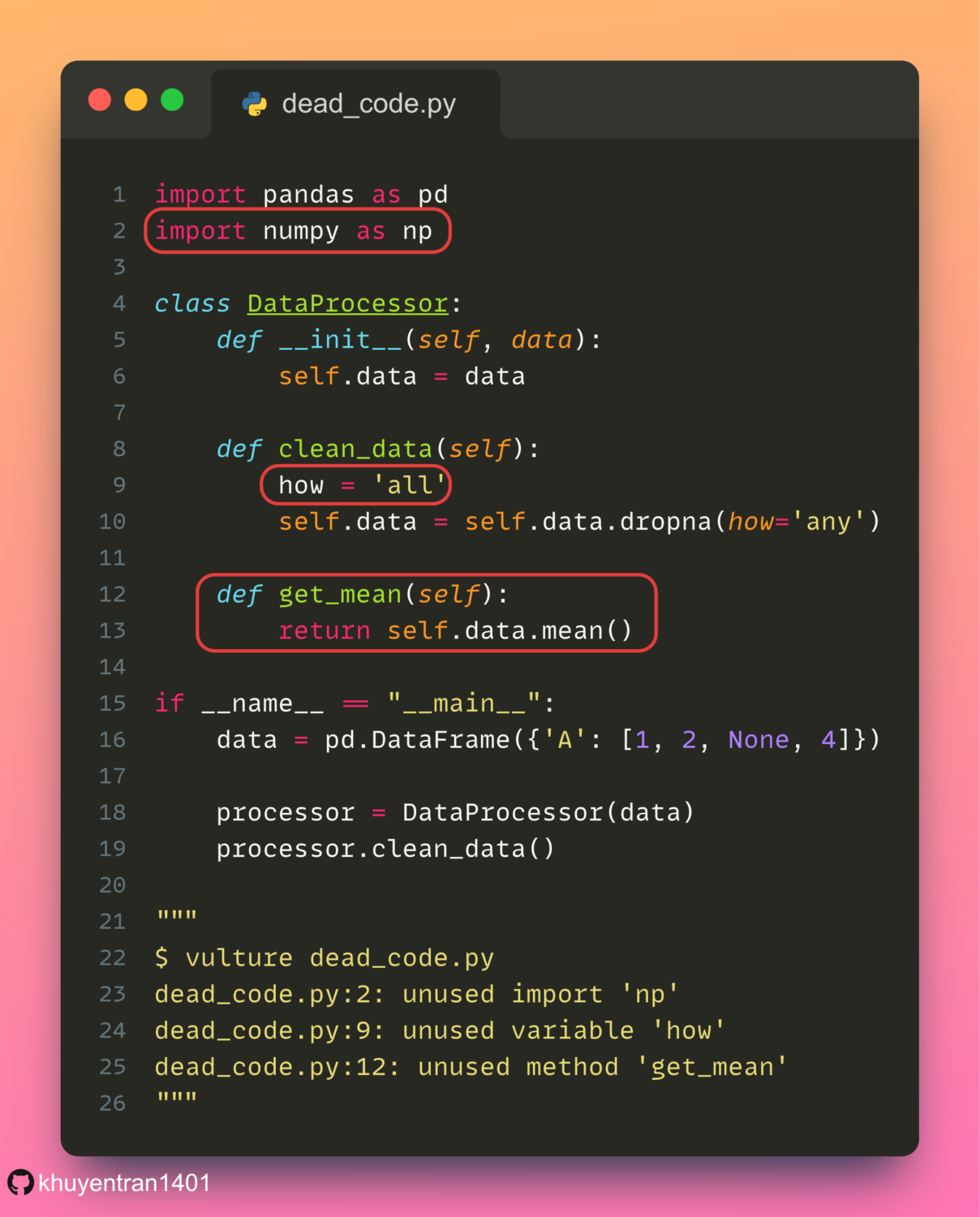Outdated or unused code left as comments in Python files can clutter codebases, making them harder to read and maintain.
Eradicate solves this by automatically identifying and removing commented-out code from Python files.
Let’s see eradicate in action:
Example Python file:
# from math import *
def mean(nums: list):
# print(nums)
# TODO: check if nums is empty
# Return mean
return sum(nums) / len(nums)
# nums = [0, 1]
nums = [1, 2, 3]
mean(nums)
Preview changes:
$ eradicate main.py
— before/main.py
+++ after/main.py
@@ -1,11 +1,8 @@
-# from math import *
def mean(nums: list):
– # print(nums)
# TODO: check if nums is empty
# Return mean
return sum(nums) / len(nums)
-# nums = [0, 1]
nums = [1, 2, 3]
mean(nums)
Apply changes:
$ eradicate main.py -i
Results:
def mean(nums: list):
# TODO: check if nums is empty
# Return mean
return sum(nums) / len(nums)
nums = [1, 2, 3]
mean(nums)
In this example, eradicate removes:
The commented-out import statement # from math import *
The commented-out debug print statement # print(nums)
The commented-out variable assignment # nums = [0, 1]
However, it preserves the meaningful comments:
The TODO comment # TODO: check if nums is empty
The descriptive comment # Return mean
This cleanup improves the code’s readability by removing distracting, unused code comments while keeping important notes for developers.
You can use eradicate with pre-commit by adding the following to your .pre-commit-config.yaml file:
repos:
– repo: https://github.com/wemake-services/eradicate/
rev: v2.2.0
hooks:
– id: eradicate
Link to eradicate.
Favorite

